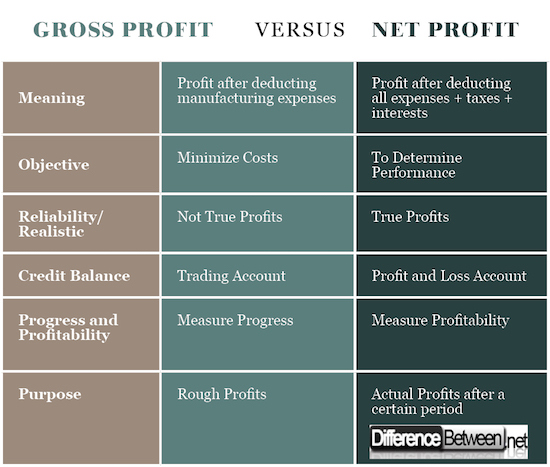
In fixing the insured value, the cost of transportation and anticipated profits are added to original value so that in case of loss. The insured can recover not only the cost principle of indemnity meaning of goods or properties but a certain percentage of profit also. About Cargo, the proposition of the claim question as to the reinstatement of the sum insured is irrelevant.

Similarly, there is also no point in arranging an excessive sum insured as that will never entitle him to get more than the actual amount of loss as already explained. Well, in that case, it can be said with definite certainty that there will always be a temptation to create an insured event deliberately for the sole purpose of making a profit out of a loss. Consider a proposition wherein through over-insurance, somebody is allowed to take more than the actual amount of loss.
Since moving to Nashville in 2005, he has provided legal advice to clients forming new businesses, planning for the future, and seeking funding through the use of equity and/or debt in their businesses. This advice has included the selection of business type, assistance in drafting and editing their business plans and offering material, reviewing proposed term sheets, and conducting due diligence. Forest has held a Series 7, General Securities Representative Exam, Series 24, General Securities Principal, and Series 63, Uniform Securities Agent State Law. Here, an indemnity refers to an agreement that holds board directors free from any personal liability claims if the company they serve ever gets sued.
Conditions for Indemnity
Indemnity insurance compensates the beneficiaries of the policies for their actual economic losses, up to the limiting amount of the insurance policy. It generally requires the insured to prove the amount of its loss before it can recover. Recovery is limited to the amount of the provable loss even if the face amount of the policy is higher. This is in contrast to, for example, life insurance, where the amount of the beneficiary’s economic loss is irrelevant.
We also address any other issues related to contract law that may arise in your business practice. Regardless of the size of your company, an indemnity agreement always comes in handy. Regardless of the contractual agreement, you are about to engage in, and legal representation is one thing you can’t overlook. Every business would wish to protect itself from the risk of liability, more so when dealing with subcontractors. The indemnifier promises to pay for the losses incurred by all the parties in a given contract, including the third party.
Many companies make indemnity insurance a requirement, as lawsuits are common. Everyday examples include malpractice insurance, which is common coverage for those in the medical field, and errors and omissions insurance (E&O), which protects companies and their employees against claims made by clients and applies to any given industry. Some companies also invest in deferred compensation indemnity insurance, which protects the money that companies expect to receive in the future. Indemnity may be paid in the form of cash, or by way of repairs or replacement, depending on the terms of the indemnity agreement. For example, in the case of home insurance, the homeowner pays insurance premiums to the insurance company in exchange for the assurance that the homeowner will be indemnified if the house sustains damage from fire, natural disasters, or other perils specified in the insurance agreement.
On the other hand, if it is lower than the assured sum, the underwriter would be liable for a return of premium of the difference. However, in marine insurance, insurable value is not common because no profit is allowed in estimating the insurable value. Moreover, in marine insurance, the assured value removes all complications of valuation at the time of loss. Insured value is not justified in fire insurance due to moral hazard as the property remains within the approach of the assured, while the subject- matter is movable from one place to another in the case of marine insurance, and the assured value is fully justified there.
Contract award
However, the insurance company must also watch out for anyone looking for a way to scam them into free money. This insurance protects the holder from paying the full amount of a settlement, even if it is his fault. Many businesses require indemnity for their directors and executives because lawsuits are common. As with any other form of insurance, indemnity insurance covers the costs of an indemnity claim, including, but not limited to, court costs, fees, and settlements. The amount covered by insurance depends on the specific agreement, and the cost of the insurance depends on many factors, including the policyholder’s history of indemnity claims.

The rationale behind this principle is to protect insurance companies by eliminating moral hazard. Insureds won’t be as tempted to commit insurance fraud if there was no way to profit from a claim as all they would get back is what they lost. Essentially, the way it works is that the company agrees to indemnify the directors and hold them harmless from liabilities that may result from the business being sued or held responsible for a major loss. Indemnification may be compensated in the form of cash, by way of repairs or replacement, or by other means which the parties have agreed upon.
Two-condition of Average
In theory, any person can affect any number of policies for any amount, and at the time of claim, all such policies must pay all the sum insured under all such policies. In other words, the principle of indemnity ensures that the insured gets made whole from their loss but will not benefit, gain, or profit from an accident or claim. Nor will you get less than what is necessary to restore you to the same financial position.
The plaintiffs said it should be the cost of replacement, relying on Hollebone v. Midhurst & Fernhurst Builders Ltd. [1968] 1 Lloyd’s Rep. 38. This is our final principle that creates an insurance contract and the most simple one probably. Again if the insurable value happens to be more than the assured sum, the assured would be proportionately uninsured. But if there is a partial loss under a valued policy, it is settled on an indemnity basis as is usually done under a normal policy on the ordinary market value basis. Nevertheless, from the underwriting point of view, like excess, such a check is given to treat moral hazards and trivial claims.
There are caveats as the principle of indemnity can be overwritten by other terms and conditions. If the insured purchased a limit of $10,000 on his car and got into a crash that is estimated to cost $15,000 to repair, the insured would only be entitled to $10,000 in indemnity from the insurer even though the principle of indemnity is supposed to guarantee them $15,000 (the amount required to make him whole). This is because the principle of indemnity is subordinate to the limit of insurance purchased or other terms like coinsurance penalties.
Indemnity
For example, in the case of a rental property, a tenant is typically responsible for damage due to negligence, fines, lawyer fees, and more depending on the agreement. Indemnity is common in agreements between an individual and a business (for example, an agreement to obtain car insurance). However, it can also apply on a larger scale to relationships between businesses and government or between governments of two or more countries.
Collisions, Allisions and Prudent Uninsureds – Technip v Medgulf … – Lexology
Collisions, Allisions and Prudent Uninsureds – Technip v Medgulf ….
Posted: Wed, 02 Aug 2023 08:11:18 GMT [source]
For instance, if your car is inured for $10,000 but damages are only $3,000. About the marine hull, the sum insured remains as it is, even though a number of partial claims have been paid during the same period of insurance. In addition to the payment of partial loss(es), there may be a liability for total loss also. Such types of policies are not much in use and considering that the probability of total loss is very remote, such policies do not create any significant impact on the principle of indemnity since partial losses are always paid in full subject to the limit of the sum insured. Except for life and personal accident insurance, all insurance contracts are contracts of indemnity. Life and personal accident insurance are not contracts of indemnities simply because life or limb cannot be valued in terms of money.
Distinction from guarantees
Accordingly I agree with the sum allowed by the trial judge as the cost of replacement. Indemnity is a comprehensive form of insurance compensation for damage or loss. It amounts to a contractual agreement between two parties in which one party agrees to pay for potential losses or damage caused by another party. A fundamental principle to the law applicable to insurance matters is the requirement that insurance coverage concept of indemnification, meaning that (subject to an adequate amount of insurance) a person should be put back into the same financial position as existed before the loss of the insured object.
- Indemnity insurance is a way for a company (or individual) to obtain protection from indemnity claims.
- Below we explain each item briefly, including how each may relate to a potential injury lawsuit.
- The insurer agrees to indemnify the assured only in the manner and only to the extent agreed upon.
- This can lead to disputes when you have suffered an incident you thought was covered but your insurance provider says it’s not.
- If you repair or replace the damaged or destroyed building(s), on the same site, with a building of the same occupancy, constructed with
materials of similar quality, within a reasonable time after the damage, we will pay the cost of repairs or replacement (whichever is less)
without deduction for depreciation.
The facts and the conduct of the parties involved often determine the obligation’s extent. For instance, in a master-servant relationship, the master must compensate the servant if they suffer injuries. However, the injuries must have resulted from the servant following the master’s instructions. The defendants said it should be the difference in value before and after the fire, relying on Philips v. Ward, [1956] 1 W.L.R. 471.
Therefore, the principle of indemnity is not followed strictly, as the usual appreciation and depreciation are not taken into account. Valued policies are those policies where the value of the property is agreed upon beforehand and which is made the sum insured under the policy. There are certain types of policies that do create an impact on the principle of indemnity. But it has to be appreciated that this is due to the defective arrangement of insurance for which the principle of indemnity cannot be blamed. To take care of such a situation, the average has been introduced to make the insured his part-insurer to the extent of under insurance.
- Credit card transactions that are processed through this marketing.legal website will reflect “WebMarket Consultants Inc.” on the cardholder’s statement.
- However, in theory, it can never be guaranteed that there won’t be total loss ever.
- However, it can also apply on a larger scale to relationships between businesses and government or between governments of two or more countries.
For example, if you suffer a loss to your home due to a fire and it is estimated that it would cost $50,000 to repair the damage, then that is what you would get from the insurance company subject to limits of insurance selected and other terms and conditions of the insurance policy. This is a written agreement to indemnify, where the terms and conditions by which the concerned parties must abide are usually indicated. These include insurance indemnity contracts, construction contracts, agency contracts, etc. In contract law, an indemnity is a contractual obligation of one party (the indemnitor) to compensate the loss incurred by another party (the indemnitee) due to the relevant acts of the indemnitor or any other party.

